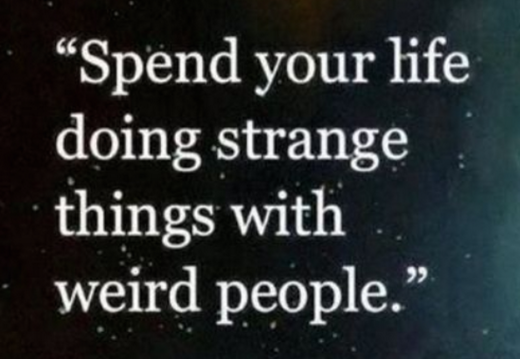
Olga Steidl is the Growth manager at Inbot.
How many meaningful connections have you built this week? How many old connections did you nurture? When was the last time someone excitedly called you to tell you about a project they launched with someone you introduced them to?
When you live and breath the mantra “never eat alone” you know how important it is to attract and spend time with people you like: the right type of people that help you naturally move forward mentally, emotionally and, of course, professionally. You need to start building connections and these connections can be looked at as your personal ecosystem.
Over the last 10 years, I’ve worked within a variety of professional ecosystems in following areas: software, partnerships, personal and product PR, as well as local startup ecosystems in Berlin, Zurich, Vienna, Singapore, Moscow and St. Petersburg.
It is very crucial, in the modern world, to build these ecosystems. Synergy with the partners within the ecosystem will allow you to not only achieve the current goals, but also in a long run create a perpetual motion machine of ideas, projects and positive energy.
Understanding personal networks
Building an ecosystem means connecting links between the ecosystem players, and lowering the barriers for new people to enter. When you cook a soup, you need liquid as a base, specific ingredients and spices and time to boil. You can’t create an ecosystem overnight or without the right ingredients.
The main tools for an ecosystem include storytelling, partnership and giving back to the community. Now let’s look at each tool for establishing an ecosystem.
Steps to storytelling
It is very hard to walk the fine line between shouting and sharing, but each person has interesting stories to tell. These need to be shared. Here is how to go about uncovering your story and sharing it.
1. Spend a day talking to a partner, colleague or a consultant about why, for you personally, it is important to be heard. Choose a conversational partner that is good at asking questions. The more questions they ask, the more potential quotes you have to write down and more vivid and personal the story is. (in the next post we will talk about the actual questions you need to answer).
2. Identify the audience with whom you would like to share your story.
3. Identify what story or stories you are compelled to share.
4. Ask questions such as: Are you a connector? Do you want to inspire people? Are you merely looking for people to understand and adopt your ideas?
When going through this process, don’t be afraid to be vulnerable. In my previous post on presentation skills, there is nothing embarrassing about being authentic. Your personal authenticity will give you a hint of what your ecosystem role is. These questions can help identify your desired role.
In this first conversation you need to figure out what ecosystem you are attracting and what people will follow the story.
Look at your social profiles, your website, bios you use. Ask yourself what parts of the story are missing. Are you emphasising the right elements?
Ideally, after a day or so of brainstorming you’ll have:
- One specific goal you want to achieve with building an ecosystem
- A list of topics you can present
- Quotes for press
- Profiles and personas of the ecosystem players and partners you hope to attract
- A new personal bio
This is just the beginning. This list should help you to focus, not limit you in anyway.
Defining your strategies will assist you to achieve those goals and identify the resources you need to allocate. With one single metric which you are focused on improving while building the ecosystem, you can measure results in a focused manner.
In the case of a local ecosystem, like Berlin or San Francisco, they count the number of successful startups. In the case of Oprah, she would measure the number of projects she launches or people she has helped.
In your case, it can be a number of new projects started because you facilitated a connection between the ecosystem players.
1-Year Partnership Establishment Plan
Partnership are all about engagement and getting to know people. In the first 6 months of building your personal ecosystem, you need to visit EVERY industry event you can find to understand the playground.
This is very crucial for understanding the invisible forces within the community. Keep these questions and tips in mind:
- What people, despite their reputation, are important to speak with and listen to?
- Where is you niche in this kaleidoscope of characters, products and topics?
- Go to university lectures, connect with journalists writing on the topics you are interested in and ask for help.
- Don’t be afraid to be open that you are a newbie in this community.
- Find a guide that can help you navigate this role-play. It can be your mentor or a friend.
After six months, if you are fast enough, you will collect knowledge about individuals, products, events and scenes. You will be able to start connecting them together and will likely be amazed with the connections created and what comes out of them.
Remember: A successful connection is a connection that can sustain without you nurturing it.
Give back to the community
Successful and strong links between community members help you to build your own “reality” inside the ecosystem. You should create such links and start to give to the community as soon as possible.
Don’t expect anything back.This does not mean to just donate money to any charity (though if you do it, keep doing that). This means:
- Organizing industry events or helping to find relevant speakers
- Giving comments to news articles
- Making introductions
- Helping to brainstorm on someone else’s product.
This type of giving, highlights your strength and abilities to others. People will then come back to you about specific topics, creating a beneficial feedback loop.
Once you have completed these steps, it is time to review your results. Review the stories, topics and quotes listed during the story telling exercise. Will people come back for these stories or do they identify you in another way? What strength do they refer to most often? How can you help the most?
What’s next?
 After six months to a year, you’ll have your ecosystem established. Next, you can move to another ecosystem.
After six months to a year, you’ll have your ecosystem established. Next, you can move to another ecosystem.
Choose the next one and repeat the partnership and giving back phases. Be the connector between different ecosystems. Create cross links and unexpected mixes. Write down ideas how you, or someone else, can grow through such connections.
People will come back more often asking for your advice, knowing that you are a connection between multiple ecosystems. The process is ongoing and can expand into larger and larger networks.
Read next: A guide to networking for those who hate networking
Get the TNW newsletter
Get the most important tech news in your inbox each week.


